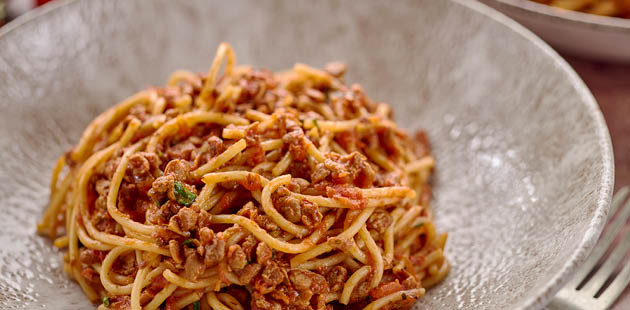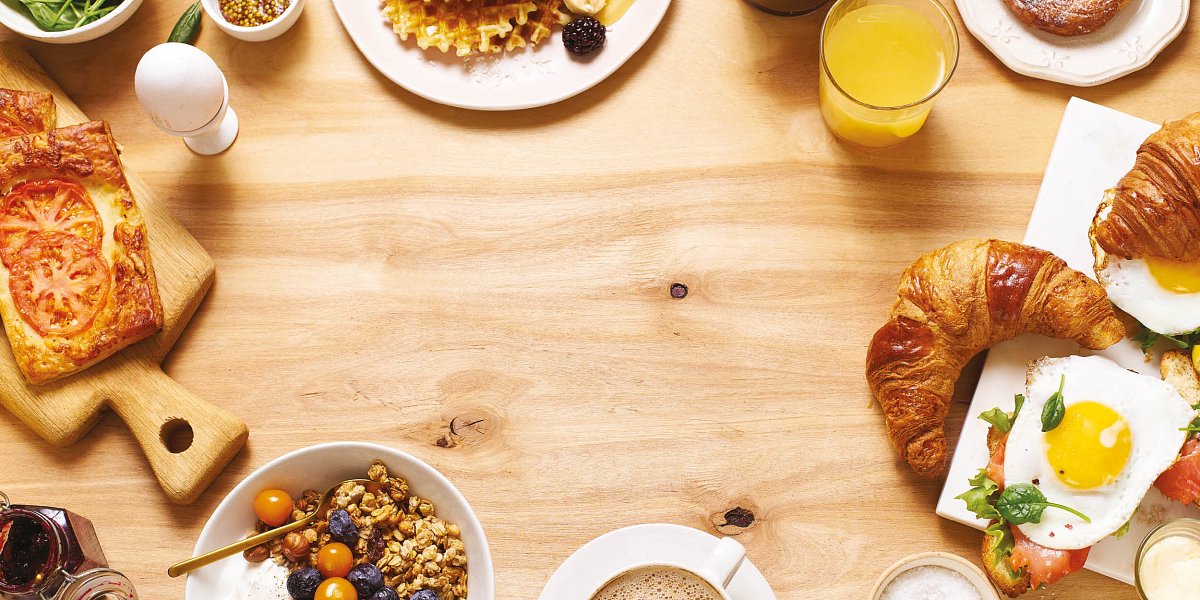FEATURE: Spring your menu into the new season
Find out how you can bring new dishes to your menu this season. From ideas to presentation, here’s how you can become inspired

When picking a place to eat, one of the first things wondered is if the menu is any good. From chalkboards to laminated copies, menus come in all formats to display an array of food and chef specials. Care homes are no different, and quality should always be considered not just when it comes to expanding and updating options, but how the menu is presented as well. As Carl Fox, chef at Ridgeway Care Home says: “Part of the eating experience is through the eyes.”
Eye-catching images of dishes on your menu are more likely to garner interest and give residents an idea as to whether they’d like it on sight. A specific description is also incredibly helpful. Sometimes, for the sake of keeping presentation more compact, menus don’t always go into depth regarding portion sizes or specific ingredients. Allergens are often excluded from menu sheets, ready to be brought out if someone asks.
In care homes, portion size and allergen content can be an imperative inclusion to your menu. Whether residents have set meals every day, or fancy trying something new, all information being easily available will be a bonus. These adjustments can give an all-round better experience when residents are choosing meals as well as improve the quality of catering services. The eating process starts way before food goes in a pan or even before it’s ordered from suppliers. While there are ways to constantly improve dishes and expand, how food is first presented on paper plays a bigger part than people realise.
Get with the trends
Updating a menu every season is a great idea to alternate dishes, provide variety to residents, and keep things fresh and moving with the times. Trends make rounds, constantly coming and going; it’s important that operators keep up with them.
“Just because someone needs specific care doesn’t mean that the quality of food they receive should ever be compromised,” says Neil Russell, chairman of PJ Care. By incorporating trends into menus and ensuring they don’t remain outdated, you’re showing the residents you provide for are your top priority. Care home caterers should provide just as incredible quality experiences as a restaurant would, so this is how mealtimes should be put on – a properly set table, a menu waiting for them, and a specials board should they want to change things up!
National Institute for Health and Care Excellence (NICE) data shows that malnutrition affects 41% of care home residents in the UK. This is such a prevalent issue faced in the care sector when, with the right staff taking the right care – having positive, can-do attitudes, and a genuine passion for their job – it can be reduced massively. While dietary requirements can provide chefs with challenges and restrictions, residents can still be served top quality meals within their diet boundaries.
Small dishes like “salads with lentils and leaves with a light dressing can be a great, fresh dish for spring and can be versatile,” says Justina Bajorinaite, chef at Vegetarian for Life. Similarly, Carl Fox’s fruit platters for Nutrition and Hydration Week are also a wonderful addition. Adding a spread of melon, strawberries, apples and grapes – all easy to chew and consume – can really make the difference. Fruit and salad contain vitamins A and C and add to fibre intake, which is an all-round immune system booster. As well as being light on the stomach, salads and fruits can be blended into smoothies, which will still provide residents with that fresh flavour, delicious taste, and give a better experience if they are unable to swallow as easily. 50-75% of care home residents suffer with dysphagia, according to studies from the Health Research Authority, so changing to a liquid for easier consumption is important to consider.
“As new trends, flavours and products continue to emerge, it’s important to consider how these can be shared especially as the older generation will become a much more important part of the demographic mix in the UK, rising to 21.8% by 2040, from 17.8% in 2020,” says Wayne Wright, healthcare culinary development chef at Bidfood. “Seeing and tasting what’s out there will help caterers know what flavour profiles are on trend and make adapting them for the care sector simpler.”

Adding a taste of nostalgia milkshakes to menus can do wonders
Different tastes
We’re all different; we all have different likes, dislikes and tastes, so how do we translate the experience of trying new things into something that will encourage care home residents? It’s great to have a picture of a new dish, and while that will sell to the resident actively wanting to branch out and try new things or change things up, what about encouraging those who are more reserved or particular to expand their choice? While many people prefer to eat routine meals so they know exactly what to expect, there will be some residents who are open to new things! Culinary director, Bruce Toon, at Compass Group UK and Ireland, shares how they “have developed a calendar of events to celebrate traditions, but it’s also often an opportunity to try things a bit differently within our menus”.
When new dishes are surrounded by events, bright colours and celebration, residents might see others getting involved and not want to miss out.
“We enhance events with special concepts, and these range from traditional calendar dates such as Bonfire night, Burns Night and VE Day to fine dining-style meals. We have also developed a pop-up restaurant that is delivered by a guest chef within the community, we find that this brings a unique ‘party in a box’ approach creating a sense of fun, community and belonging,” Toon adds.
The limited nature of new dishes associated with occasions can also help encourage residents to try different food. If a resident is unsure of a new dish on the menu and they know it isn’t sticking around too long, the time crunch can certainly be a way to help them decide.
Cook-offs are also a great way to provide smaller, less wasteful samples of new dishes to add to menus. By doing this, residents can sample as much or as little as they please with no daunting thought of finishing a full plate they are unsure about, and can have a chance to see what will be on upcoming menus. This is also a thoughtful way for chefs and catering managers to gauge reactions, gain feedback, and see what is popular amongst residents!
It’s a speciality!
Having a chef’s special not only provides a little extra excitement – that there has to be something more about this dish, surely, if it’s a special! – but it also lets a care home chef be creative. Catering in care homes does have boundaries and barriers to consider but that shouldn’t mean a chef can’t reach their full potential. Over at Toon’s White Oak nationwide care catering team, there is such a thing as ‘Saturday Specials’ which allows chefs to showcase a dish they love to make. Not only does this bring variety to residents but it also gives a chance for a chef to go all-out with a choice once a week, helping to break up routine! By including homemade special dishes like this, starting a ‘chef’s special’ day, intrigue and interest is created. With the promise of switching up that special every other week, residents are bound to look forward to seeing what dish will be next.
So ensure you have the means to present it well, both on a chalkboard (full restaurant style! Give residents a taste of the hospitality they may have once received!) and a menu. Make the special stand out with good designs, an image that pops, and a fully detailed description of what the dish is. While we know you can’t really count out every chip that goes on a plate to detail portion size, you can with bigger things! Serving a handful of cakes for dessert? State how many residents might receive. Perhaps your starter includes breaded mushrooms – let them know how many they’ll be having. Sometimes, just knowing portion size can make all the difference when it comes to residents picking from a menu. Having a better understanding of the serving size can play a massive role in knowing if they’ll be able to handle it that day.

Switch it up with a vegan mince bolognaise from Central Foods
Spring is in the air – and on our plates!
A new season brings the perfect opportunity to put a spring in your menu’s step! Bring the warmth back in with some colourful, tasteful dishes. Wright says: “Don’t let the price of lamb put you off! Shoulder is more affordable than leg, and when roasted low and slow it can be pulled or sliced.” Give your residents a taste of nostalgia from a traditional Easter lamb roast with a generous pour of rich, seasoned gravy, a handful of fresh seasonal vegetables and a potato side of your choice.
You can bring fresh flavours to a well-loved spaghetti bolognaise by adding vegan mince, which Gordon Lauder, MD of Central Foods, says “can be significantly cheaper than standard beef mince and provides a greater yield so it’s a great meat swap in many popular dishes, even beyond a bolognaise”. Adding garlic or even a pinch of spice can really zing up the meal and bring new tastes.
Wright also suggests that there are “opportunities to add a few twists and turns for maximum flavour, like with the famous prawn cocktail.
“The fundamentals of this recipe include a dash of chilli powder and a sprinkling of paprika. Now we’re seeing the addition of Sriracha which can add more depth of flavour and has a better ring to it as a menu descriptor.”








